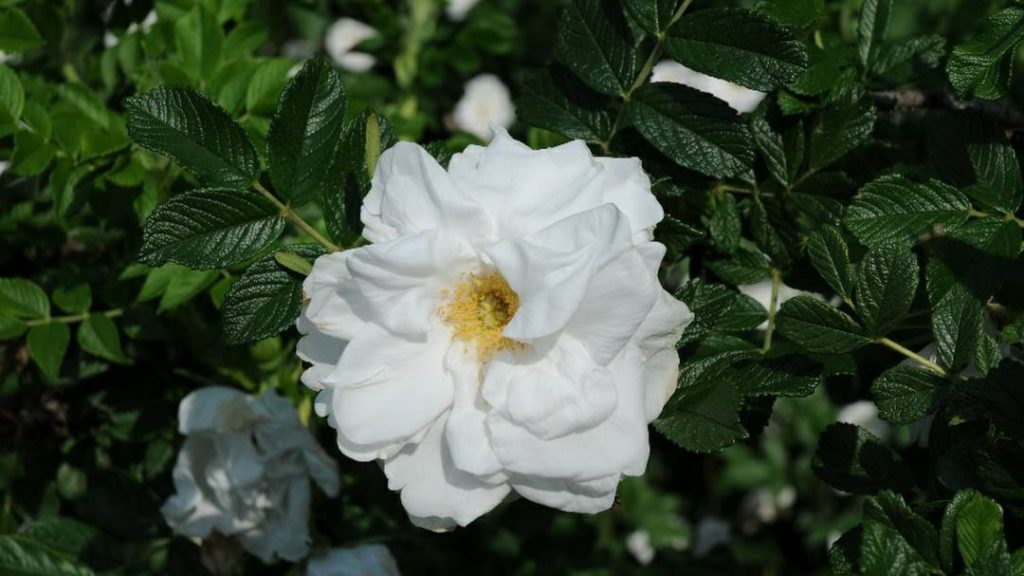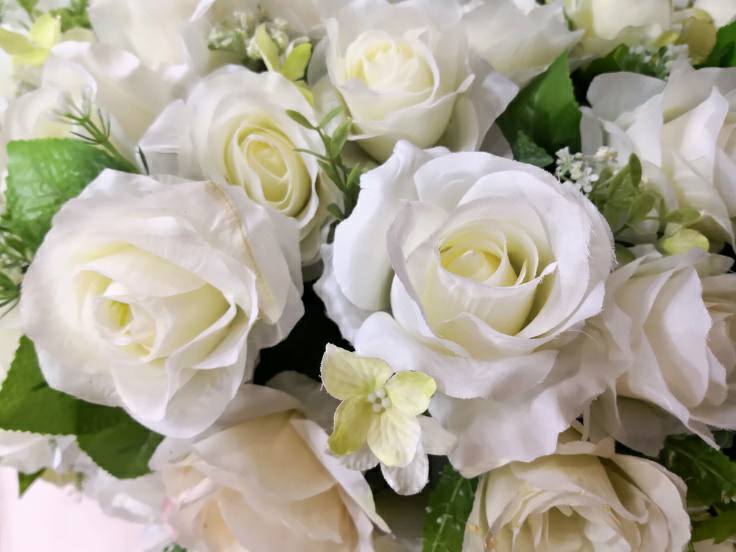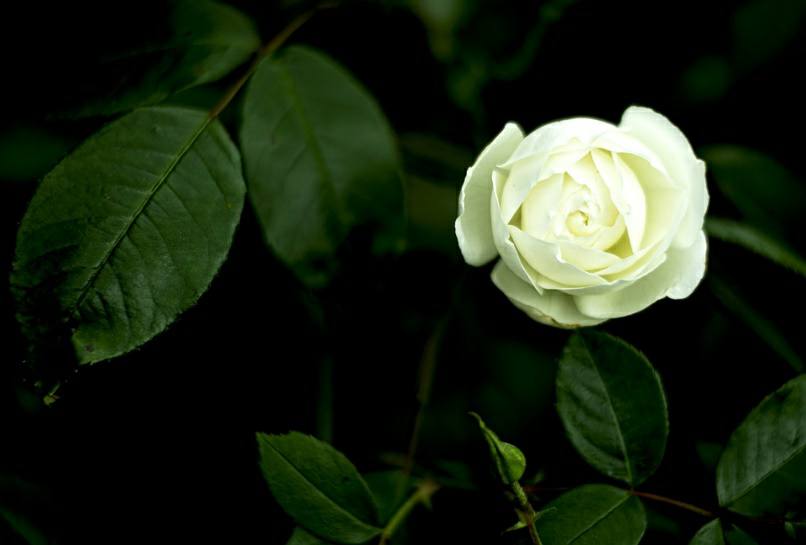White roses have long been a symbol of purity, innocence, and reverence, making them a popular choice for gardens and special occasions. If you’re thinking of adding some white garden roses to your landscape, you’ll be spoilt for choice as there are many beautiful varieties to choose from.
In this article, we’ll introduce you to some of the best white roses, provide tips on how to grow and care for them, and even offer a list of classic white roses to help you make your decision.
Types of White Garden Roses
There are many different types of white roses to choose from, each with its own unique characteristics and attributes. Some of the most popular white garden roses include:
- Hybrid tea roses: a popular choice for gardens and are known for their large, full blooms and long, elegant stems. They come in a variety of colors, including white, and are often used in bouquets and arrangements.
- Floribunda roses: similar to hybrid tea roses, but they have smaller, more numerous blooms and are often used as border plants or in mass plantings. They also come in a range of colors, including white.
- Old garden roses: also known as antique roses, are varieties that were developed before 1867. They have a more traditional, old-fashioned appearance and often have a strong fragrance. Some popular white old garden roses include ‘Maiden’s Blush’, ‘Old Blush’, and ‘Baronne Prevost’.
- Shrub roses: group of roses that includes many different types, such as rugosa roses, hybrid musk roses, and hybrid multiflora roses. They are generally hardier and more disease-resistant than other types of roses, making them a good choice for novice gardeners. Some popular white shrub roses include ‘Iceberg’, ‘Blanc Double de Coubert’, and ‘Snowbird’.
Choosing the Right Variety
When choosing a white garden rose, it’s important to consider the size and growth habit of the plant, as well as its care requirements and resistance to pests and diseases. Here are some things to consider when selecting a white garden rose:
- Size: consider the size of the plant and how it will fit in with your landscape. Hybrid tea roses and floribunda roses are often smaller and more suited for containers or small gardens, while shrub roses and old garden roses can be larger and better suited for mass plantings or border plants.
- Growth habit: consider the growth habit of the plant, including how tall and wide it will grow. This is especially important if you have limited space in your garden or if you want to plant your roses near other plants.
- Care requirements: different types of white roses have different care requirements. Hybrid tea roses and floribunda roses often need more attention and care, including regular watering, fertilizing, and pruning, while shrub roses and old garden roses are generally hardier and easier to care for.
- Resistance to pests and diseases: consider the resistance of the plant to pests and diseases, as this can save you time and money in the long run. Some types of white roses, such as shrub roses and old garden roses, are generally more resistant to pests and diseases than others.
Classic White Roses to Consider
- ‘Maiden’s Blush‘: this old garden rose has soft pink and white blooms and a sweet, spicy fragrance. It’s a hardy plant that’s resistant to diseases and can tolerate a range of growing conditions.
- ‘Iceberg‘: this shrub rose is a popular choice for gardens due to its hardiness and abundance of white blooms. It’s known for its strong, fruity fragrance and can grow up to 3-4 feet tall.
- ‘Blanc Double de Coubert‘: this shrub rose is known for its large, double blooms and strong fragrance. It’s a hardy plant that can tolerate a range of growing conditions and is resistant to pests and diseases.
- ‘Peace‘: this hybrid tea rose is a classic white variety that’s known for its large, full blooms and strong fragrance. It’s a popular choice for bouquets and arrangements and is resistant to pests and diseases.
- ‘Snowbird‘: this shrub rose is known for its white, double blooms and sweet fragrance. It’s a hardy plant that’s resistant to pests and diseases and can tolerate a range of growing conditions.
Caring for White Garden Roses
- White garden roses are generally easy to care for, as long as you provide them with the right conditions. Here are some tips for caring for your white roses:
- Water your roses regularly, keeping the soil evenly moist but not waterlogged. Water at the base of the plant to avoid getting the foliage wet, which can lead to fungal diseases.
- Fertilize your roses with a balanced fertilizer, such as a 10-10-10 formula, once a month during the growing season. Follow the instructions on the label for the correct amount to use.
- Prune your roses regularly to encourage new growth and remove any dead or diseased branches. The best time to prune roses is in the spring, just as new growth begins to appear.
- Protect your roses from pests and diseases by keeping the area around the plants free of weeds and debris, and by applying a pesticide if needed.
- Deadhead your roses by removing faded blooms to encourage new growth and prevent the plant from wasting energy on seed production.
Planting and Positioning
When planting white garden roses, it’s important to choose a location that receives at least six hours of direct sunlight per day and has well-draining soil. Here are some additional tips to consider when planting and positioning your white roses:
- Dig a hole that is twice as wide and just as deep as the root ball of your rose plant. Loosen the soil at the bottom of the hole to allow for good drainage.
- Remove the rose plant from its pot and loosen the roots gently before planting. Place the plant in the hole and fill it in with soil, making sure the crown of the plant is level with the soil surface.
- Water the plant well and mulch around the base to help retain moisture and suppress weeds.
- Plant your white roses at least two feet apart to allow for proper growth and air circulation.
Propagating White Garden Roses
White garden roses can be propagated by rooting cuttings or by layering. Here’s how to propagate white roses by rooting cuttings:
- Choose a healthy stem from a white rose plant that is about six inches long and has at least two leaf nodes.
- Cut the stem just below a leaf node using a sharp knife or scissors. Remove the lower leaves, leaving only the top two or three leaves on the cutting.
- Dip the cutting in rooting hormone and plant it in a pot filled with a well-draining rooting medium, such as perlite or vermiculite. Water the cutting well and place it in a warm, sunny location.
- Keep the rooting medium moist but not waterlogged, and provide the cutting with plenty of indirect light. After a few weeks, you should see new growth and roots forming.
- Once the cutting has rooted, transplant it into a larger pot or into the ground.
Common Pests and Diseases of White Garden Roses
White garden roses are generally hardy plants, but they can be prone to certain pests and diseases. Here are some common problems to watch for:
- Black spot: this is a fungal disease that causes black spots on the leaves and stems of roses. It can weaken the plant and reduce the number of blooms. To prevent black spot, water your roses at the base of the plant to avoid getting the foliage wet, and remove and dispose of any infected leaves.
- Aphids: these tiny pests feed on the sap of roses and can cause stunted growth and distorted leaves. To control aphids, try using a natural predator such as ladybugs or use an insecticide specifically designed for aphids.
- Rose chafers: these beetles feed on the foliage of roses and can cause significant damage. To control rose chafers, handpick them off the plants and dispose of them, or use an insecticide specifically designed for these pests.
- Powdery mildew: this is a fungal disease that causes a white, powdery growth on the leaves and stems of roses. To prevent powdery mildew, avoid overcrowding your roses and ensure good air circulation around the plants.
Conclusion
White garden roses are a beautiful and timeless addition to any landscape. With so many different types to choose from, you’re sure to find a variety that suits your needs and preferences. By following our tips for growing and caring for these roses, you’ll be able to enjoy their beauty for years to come. If, knowing all the useful info we’ve provided you with, you’re still puzzled about what to look for when shopping, here’s a nice list of classic white roses.



